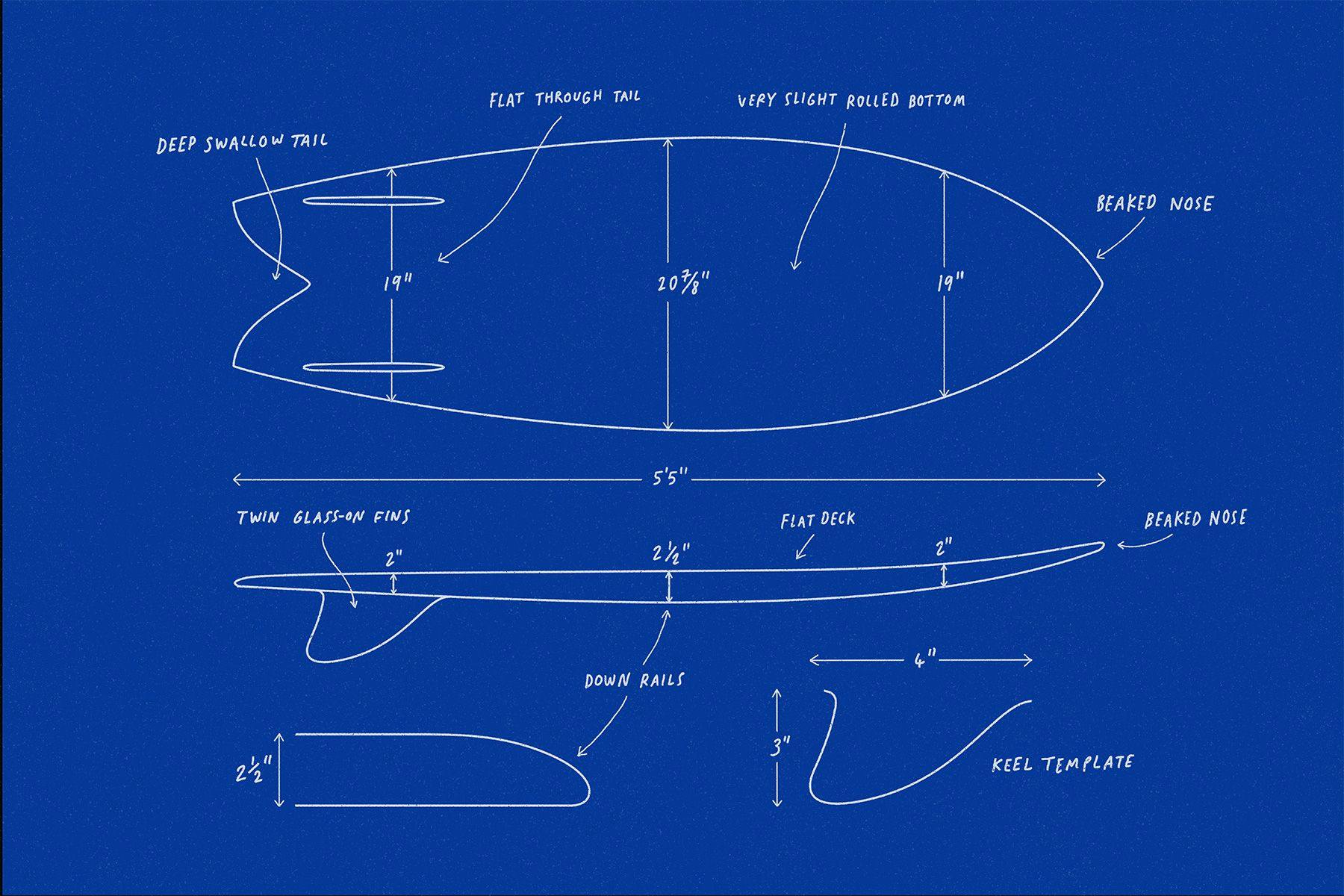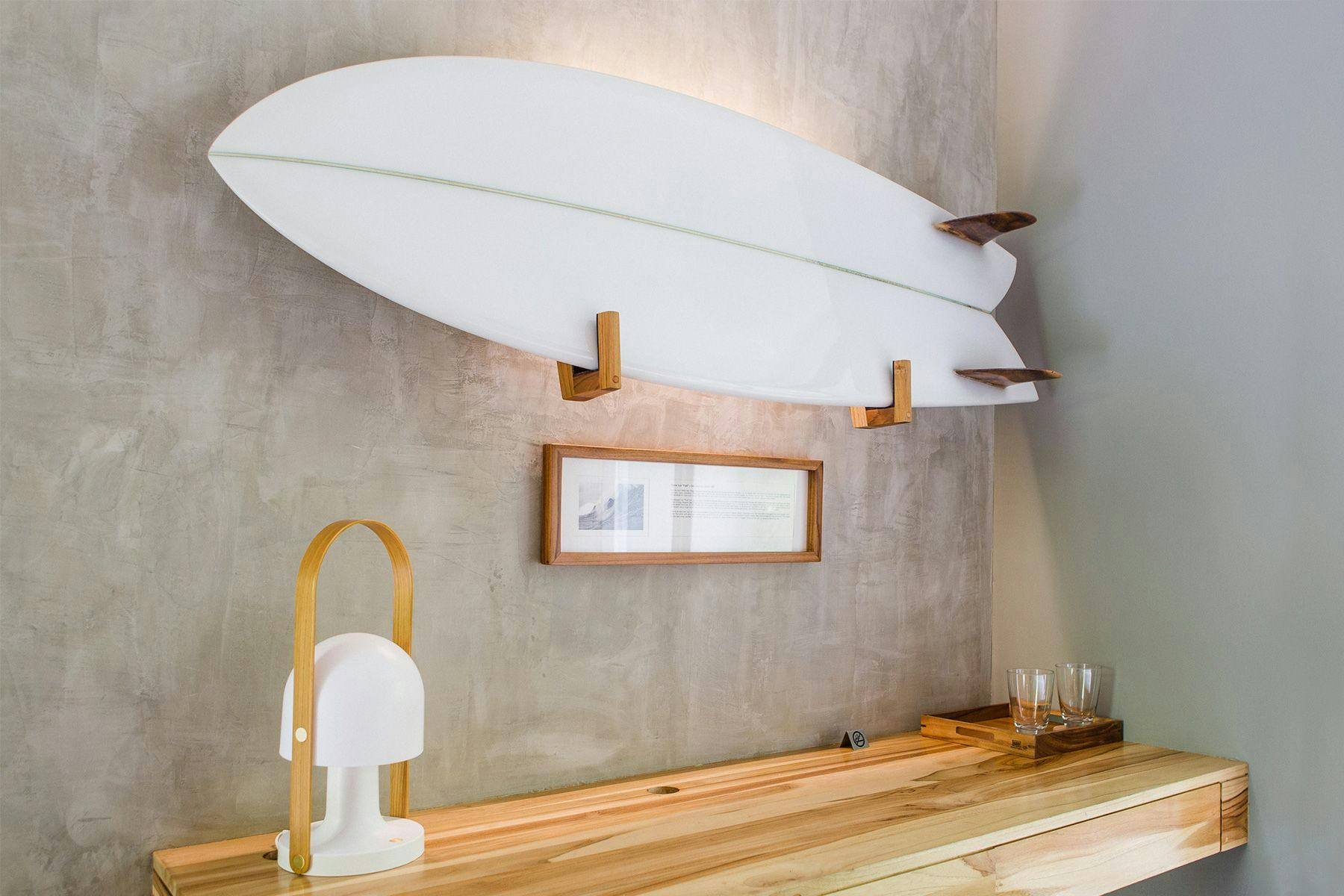SurfboardsThe History of Surfboard Design: The Fish

The Fish, designed by San Diego kneeboarder Steve Lis in 1967, is one of the most versatile and enduring surfboard designs going.
Originally designed to provide the increased speed and manoeuvrability that Lis required to ride the hollow, punchy waves of his home breaks, the fish’s most obvious features – short, wide, and thick with flat rocker and a split-tail underlined by two keel fins – led to the design gaining a reputation for performing well in small, mushy waves. After being adopted and adapted to stand-up surfing, over the years the fish has gone through several refashions and revivals – perhaps the most well-known example being Mark Richards’ iconic twin-fins of the following decade. Nowadays the label “fish” can encompass almost any high volume shortboard with a wide, pointed, nose and a fish-like tail, regardless of planshape or nuanced design features. Regardless of what features now constitute a true fish, the design managed to compound, whilst at the same time also diverge from, other surfboard designs of the time that were following a more linear design path. Considering that the fish was designed to be ridden on one’s knees, the impact that it has had on subsequent stages of surfboard design is impressive and indisputable.
The Historical Context
The late ‘60s was a highly dynamic period for surfboard design. Many surfers were quite literally taking shaping into their own hands and with that, not only shaking up the surfboard industry but also kindling something of a gold rush when it came to design experimentation. And In that context, the Fish fits right in.
Although many of its key design features (such as the twin keel fins and the split tail) had already been used on surfboards decades before, Lis was the first to merge those and other principles into a distinct new design. As a kneeboarder surfing the localised breaks of San Diego, Lis was underground and his design remained largely in the shadows for many years.
The first major acceptance of the fish design followed Jim Blears and David Nuuhiwa’s outstanding performances (placing 1st and 2nd respectively) riding fishes at the 1972 World Championships, held in small surf in San Diego. Their strong performance in poor surf made the Fish an overnight sensation but also led to the fish being labelled a small-wave design, and subsequent developments of the design built upon these characteristics. The second key moment in the development of the fish happened in 1976 when Hawaiian Reno Abellira met Australian Mark Richards, who took inspiration from the design of Abellira’s fish, stretching its length, narrowing its tail, and switching the twin-keel fin set-up for the more upright twin-fin template, creating his iconic MR twin-fin model the following year and using it to win four consecutive world titles (1979 – 1982).
Fast-forward a decade to the 1990s and the fish concept was revisited again when shaper Matt Biolos of Lost… Surfboards crafted his modern interpretation of the design – a high-performance 5’5” x 19¼” with a round nose, narrow swallow tail, and flat bottom. This not only reignited interest in the original Lis Fish, but also launched a new trend for short/fat/wide surfboards and further experiments with the fish concept such as quad fin setups and more pulled in tails to suit the even more radical surfing happening at the turn of the millennium.
Why Was This Development Necessary?
The fish is rather unique because Lis’ motivation for creating the design was solely to meet his own personal and very specific needs; he wasn’t taking the next step in a gradual development of surfboard design or trying to create a design to meet the demands of a growing market. His primary reason stemmed from the fact that while surfing the standard pintail kneeboards of the era, his swim fins would hang off the sides of the tail and cause drag. To address that he drew inspiration from La Jolla’s Chris Prowse’s split-tail boards and worked on a “twin pin” tail design that would be wide enough to accommodate his fins without losing speed or hold. The original template for the tail was actually created by tracing the outline of his Churchill fins. Lis was a practitioner of (the then relatively new) “total involvement” approach to surfing, characterised by the desire to ride deeper and turn sharper.
The fish design allowed Lis to manage the late, hollow, take-offs of the heavy reef breaks that he surfed, whilst also being able to race down the line, cut back to the foam ball, turn tightly and fit deeper in the curl to achieve the radical performance so craved by the current generation.

Who Was Involved?
A talented knee-boarder (1970 U.S. Champion) and rider of paipos, Californian Steve Lis was a creative talent in both the waves and the shaping bay. Having grown up surfing the heavy reefbreaks of San Diego, Lis was on a mission to improve his boards in order to make the most out of that particular type of wave. Driven by the desire to surf more radically and noticing the performance limitations of the pintail kneeboards that he was riding, he created the original fish in 1967, at the age of 16. The design remained an anomaly until another San Diego local, Jeff Ching, took Lis’ board out and decided to ride a few waves standing up. Ching’s ground-breaking performance caused other stand-up surfers to recognise the potential of the fish and start developing it. Although their input wasn’t as fundamental as Lis’, names like Mike Tabeling, David Nuuhiwa, Jim Blears, Reno Abellira and ultimately Mark Richards, all played key roles in the first steps of the fish’s design development.
Design Details
The various design features of the fish were an attempt at finding a middle ground between speed and manoeuvrability. Although not as manoeuvrable as a modern shortboard, the fish was night and day different to the typical California Log of the mid 1960’s. The almost straight rail line and flat rocker of the Fish’s template provide plenty of down-the-line speed, while the extremely short length of the board facilitated the tighter turning radius that Lis was looking for. The keel-shaped template of the fins was typical for many single finned boards at that time, but tends to draw out the turns when compared to more modern fins. Having the two fins set far apart aids the rail engagement and increases speed (by letting the water flow easily between them, providing that gliding feeling). Despite the fact that such short boards are often associated with instability and poor paddling efficiency, the extra volume and width of the Fish provide it with enough surface area to replicate the buoyancy and paddling characteristics of a longer board. One of the key performance characteristics of the design is the result of the deep swallow tail that gives the board a fish-shaped outline. Having what are essentially two pin tails next to each other, the fish balances the stability, lift and speed of a wide square tail with the greater hold provided by the two individual pin tails, making the board surprisingly good in both the punchy, hollow waves that Lis was surfing, as well as the small soft conditions that the board has become so synonymous with.

Specifications
Avg Minimum Avg Maximum Length 4’6” 5’5”
Width
Nose 10” 12” Midpoint 20” 22” Tail 11” 13” Thickness 2 1/2” Volume 26L 30L